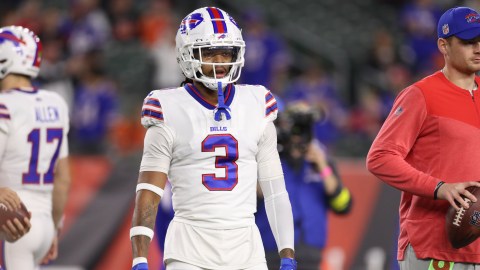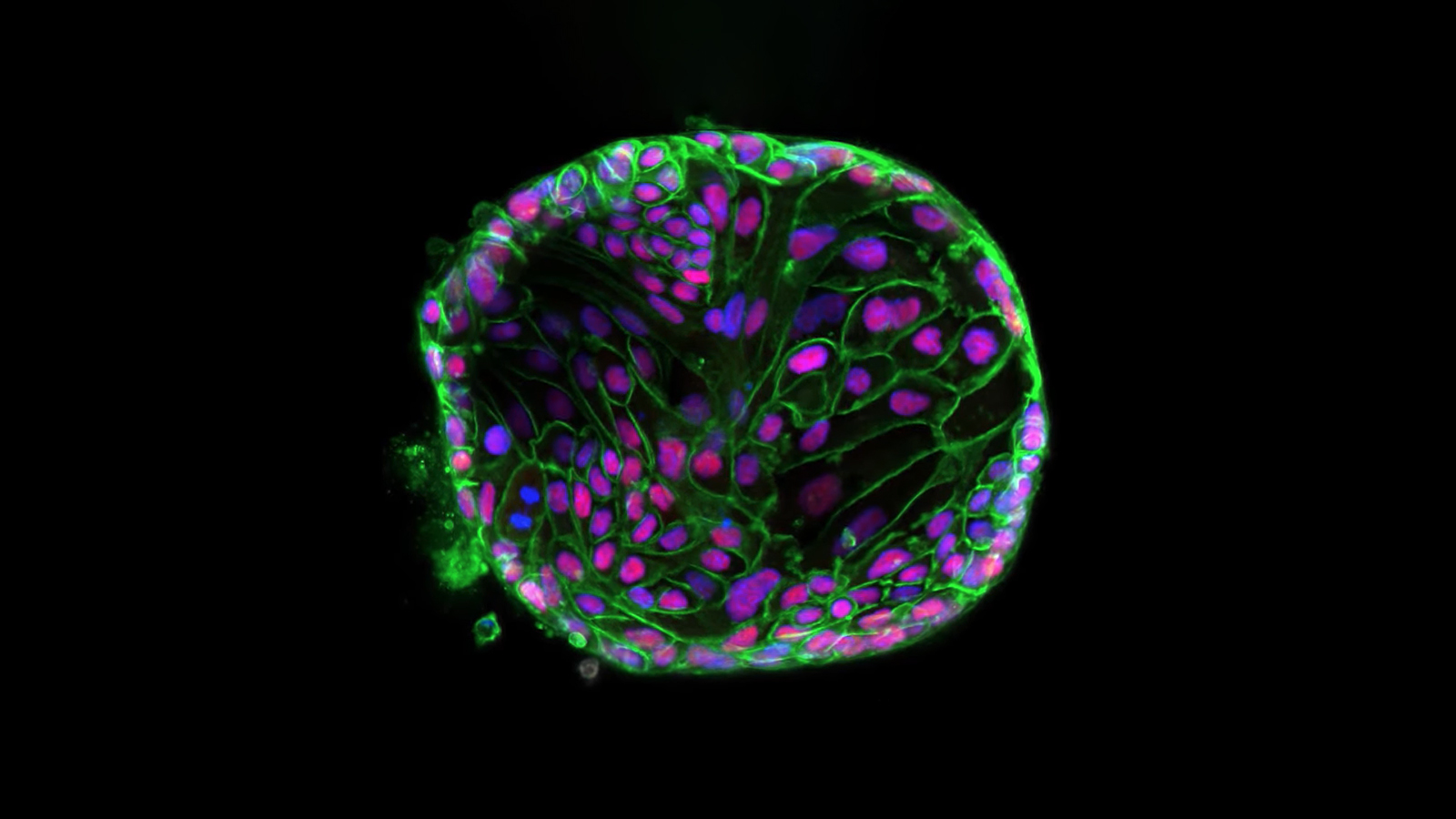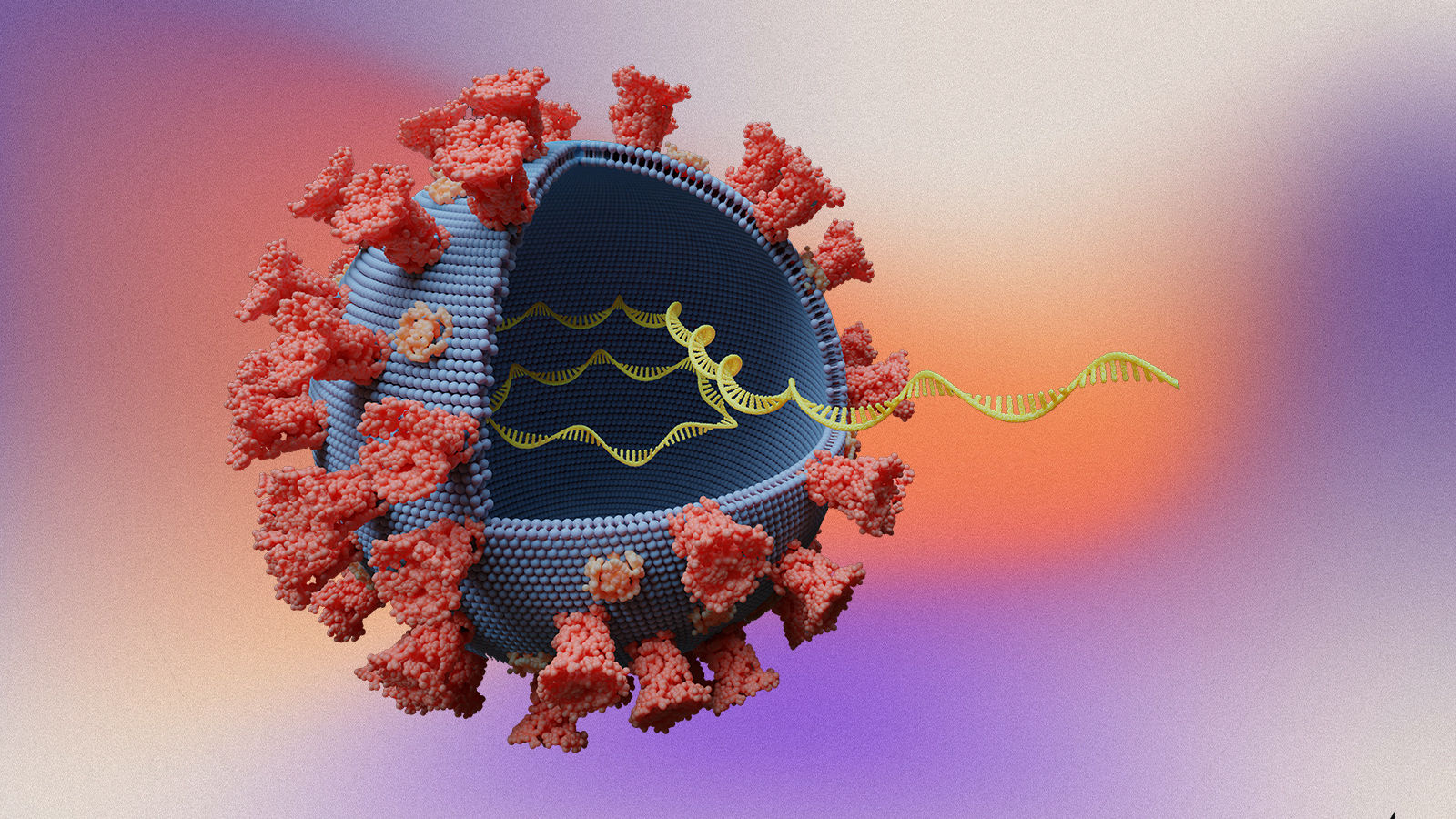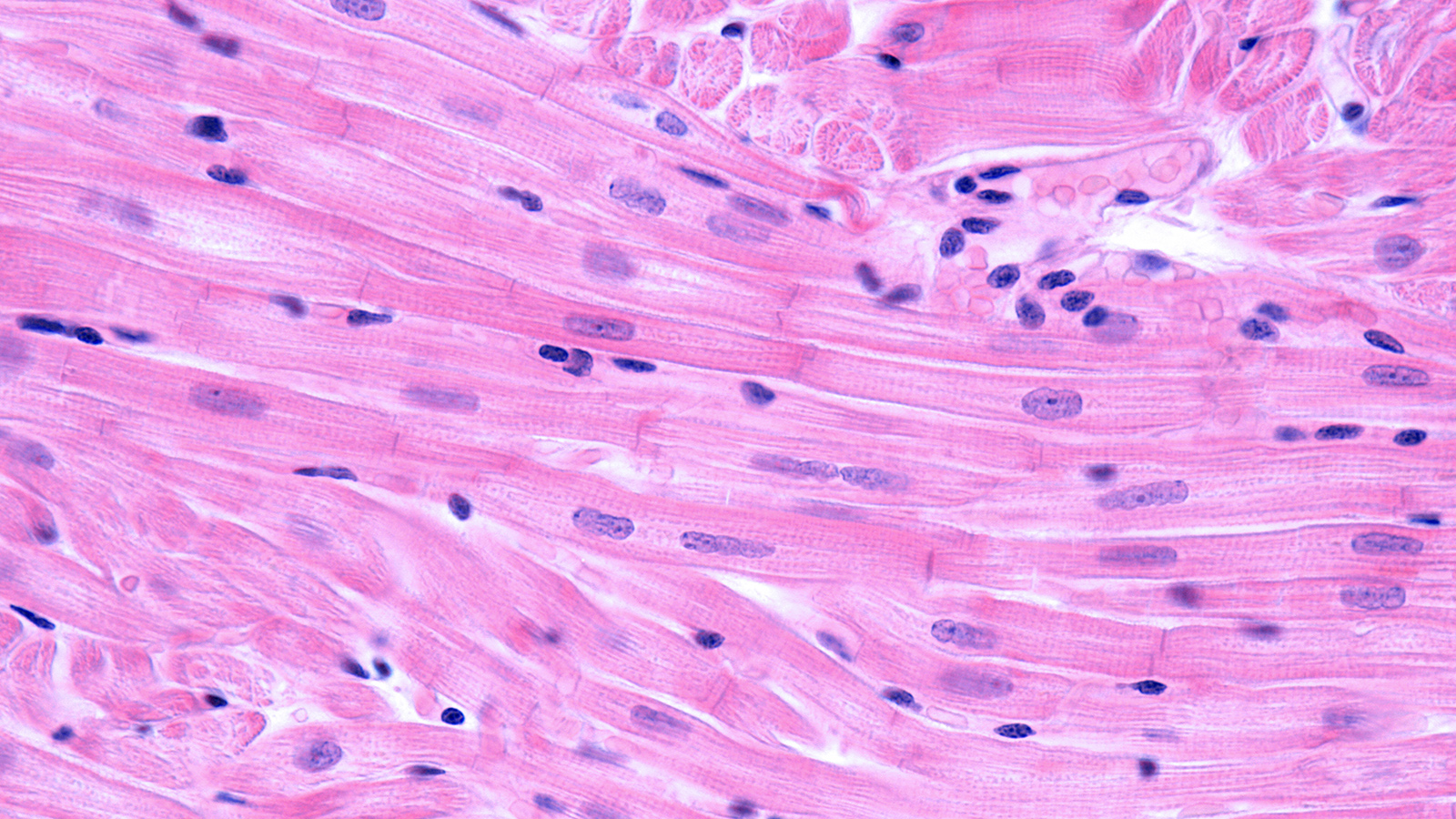No, the COVID vaccine did not cause Damar Hamlin’s cardiac arrest

- NFL player Damar Hamlin collapsed suddenly after a tackle due to cardiac arrest. This led to widespread speculation that this medical event was triggered by the COVID vaccine.
- For that conclusion to be true, three major assumptions must also be true — but only one of these is actually likely to be true.
- The most logical conclusion is the most straightforward: Hamlin received a hit to the chest at precisely the wrong moment.
The hit didn’t look all that bad – it appeared that Damar Hamlin made a pretty standard tackle. The 24-year-old Buffalo Bills safety quickly rose to his feet, and then unexpectedly fell backward to the ground.
Prior to the COVID era, this likely would have been interpreted as a textbook case of the rare condition known as commotio cordis. In brief, this rare cause of cardiac arrest occurs when an external impact to the chest causes the heart to experience a deadly arrythmia, known as ventricular fibrillation (VF). There are also many other causes of sudden cardiac death in seemingly healthy athletes (such as hypertrophic cardiomyopathy, congenital coronary artery anomalies, and long QT syndrome). While experts attribute Hamlin’s cardiac arrest to commotio cordis, considerable social media commentary has blamed this unfortunate medical event on the COVID vaccine.
Misunderstandings and assumptions
One common misunderstanding pertains to the nature of Hamlin’s collapse. While the Buffalo Bills organization reported Hamlin suffered a cardiac arrest, some incorrectly refer to Hamlin’s injury as a heart attack. A heart attack occurs when blood flow to the heart is blocked (a circulation problem), while cardiac arrest occurs when the heart stops beating (an electrical problem).
Social media commenters have suggested that the COVID vaccine was responsible for Hamlin’s cardiac arrest. Those who attempt to provide a mechanistic explanation claim that it is due to myocarditis, either directly (that is, myocarditis caused him to experience a sudden cardiac arrest) or indirectly (myocarditis made him more susceptible to commotio cordis). These claims rest upon the following assumptions: (1) Hamlin was vaccinated for COVID and/or received a recent booster; (2) He had myocarditis, or lasting physiological changes related to it, on January 2, 2023; and (3) Myocarditis increases the likelihood of commotio cordis.
Are these assumptions reasonable?
Assumption 1: Damar Hamlin received the COVID vaccine.
Hamlin’s COVID vaccination status does not appear to be public information, and his Twitter and Instagram accounts do not mention any opinions on the vaccine. The NFL mandated for certain staff, but not players, to get boosters in December 2021. In January 2022, the NFL reported that 95% of players were vaccinated. Given this figure, it seems likely (although unconfirmed) Hamlin was vaccinated at least a year before his cardiac arrest, but there is no information to support or refute his receiving a booster shot.
A November 28, 2022 injury report lists Hamlin as one of five players on the Bills who did not participate in practice due to illness. Media coverage indicated a flu-like illness prevented a number of players from participating, but the actual virus (COVID, influenza, etc.) was not disclosed. Hamlin did participate in the December 1, 2022 game.
Overall, we can assume that it was highly likely that Hamlin received at least one COVID vaccine at some point.
Assumption 2: Damar Hamlin had myocarditis on January 2, 2023.
If Hamlin’s late-November illness was indeed COVID, it is possible, but unlikely, that he had subclinical myocarditis on January 2. (Myocarditis is inflammation of the cardiac muscles.) A study conducted from March through December 2020 examined 1597 athletes who tested positive for COVID and underwent thorough cardiac evaluation to identify the prevalence of myocarditis. Of these, 37 (2.3%) tested positive for myocarditis, and only 5 experienced symptoms. Follow-up examination of 27 of these athletes revealed that 16 athletes still had indicators of myocarditis 4 to 14 weeks after they initially tested positive for COVID. Other studies have provided similar results, with an average myocarditis prevalence of 2.8% within approximately one month of COVID diagnosis.
Myocarditis is a well-documented adverse event following COVID vaccination. (However, it is crucial to point out that, as indicated in the previous paragraph, COVID itself can cause myocarditis.) A 2022 meta-analysis reported that males under 30 years of age are most likely to get myocarditis and/or pericarditis following COVID vaccination, and this may occur as commonly as 1 in 10,000 vaccinated individuals (0.01%). The overall incidence of these heart conditions was estimated to be 59.7 cases per 1 million COVID vaccine doses (0.006%) in males under 30 years old. A more recent study reported an incidence of 0.008% to 0.009% after the second dose, and 0.004% to 0.006% after a booster in 18-29-year-old males. These studies typically examine the risk within the first month following vaccination, but risk is highest within the first seven days.
Thus, it is highly unlikely Hamlin would have had COVID vaccine-related myocarditis the night of his cardiac arrest.
Assumption 3: Myocarditis increases the risk of commotio cordis.
Commotio cordis does not require pre-existing cardiac problems (for example, myocarditis, congenital abnormalities, or other pathologies). Although myocarditis and commotio cordis have long been described in the medical literature, there is no data available suggesting myocarditis would predispose an athlete to commotio cordis. However, ventricular arrythmias are more common in both active myocarditis and healed myocarditis. In a study of 185 patients presenting with myocarditis, ventricular fibrillation (the arrythmia induced by commotio cordis) was more common in those with an active case of myocarditis than those who had a resolved case (8 cases vs. 0 cases).
If myocarditis increases the risk of commotio cordis, the effect is likely small. It also appears to require that a person currently have myocarditis rather than having healed from a previous case.
The only logical conclusion: It wasn’t the COVID vaccine
Myocarditis is a more common condition than commotio cordis in athletes, and this has led some to speculate that myocarditis is the most likely explanation for Hamlin’s cardiac arrest. However, the events leading up to Hamlin’s collapse are key to suspecting commotio cordis as the most likely and logical explanation.
Hamlin experienced a clear impact to the chest moments before he went into cardiac arrest. A 2009 research paper of the commotio cordis registry identified 12 cases of commotio cordis during football over the span of 25 years. This rarity (rooted in the need to hit a precise location in the heart during a specific short window of time) should not be confused with impossibility.
Upon observing the tackle, it’s easy for those not familiar with the condition to assume the tackle and the cardiac arrest were unrelated, given the delay in time from one event to the next. As observed, Hamlin made contact with wide receiver Tee Higgins, stood up, attempted to adjust his helmet, and then fell to the ground. In fact, this sequence is not uncommon, as 20% of commotio cordis events occur with a similar time delay. For instance, a 2010 paper describes a baseball pitcher who was struck in the chest with a baseball, but had time to grab the ball at his feet and throw the base runner out before collapsing.
A number of other impact-related injuries could have caused him to collapse following the play, such as an aortic rupture or structural damage to the heart (contusio cordis, which encompasses various injuries including ventricular rupture). However, his survival following successful resuscitation with a defibrillator indicates these other forms of cardiac trauma were not the cause of his sudden collapse.
Commotio cordis is most common in athletes under the age of 20, but this should not be considered a reason to diminish the probability that it happened to the 24-year-old Hamlin. This is especially so, given that commotio cordis is documented in athletes who are 20 to 30 years old. One possible explanation for the highly skewed age distribution of this rare event is participation. The NFL has fewer than 2,000 players annually (32 teams, each with a gameday roster of 55 players, with only 46 active for a game). In contrast, approximately one million high school boys and 25,000 to 30,000 college men play football annually. If commotio cordis events are rooted in random chance, it should be far less common in the age group with the fewest participants. This may explain why it has not happened previously in the NFL, but it has in younger athletes.
If Hamlin had been running down the field and then exhibited visible signs of chest pain or respiratory distress, and then collapsed without any contact to the chest, then myocarditis could be a possible explanation for his cardiac arrest. This diagnosis would be even more plausible if he had experienced similar symptoms leading up to the game (like chest pain or tightness). Even though it is still unlikely, only under that circumstance would the role of COVID or the COVID vaccine be worthy of investigation.
However, the tragic event we witnessed on January 2 almost certainly will be explained the same way that all too many sudden deaths in athletes have been for decades before COVID emerged: a hit to the chest at precisely the wrong moment.





